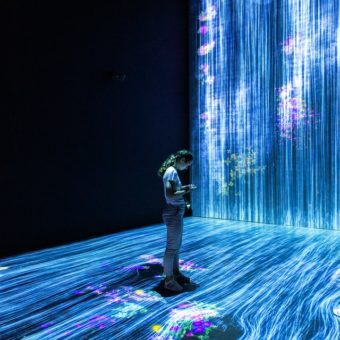Four Weekly Tech Newsletter – Feb 21
Lead articles from February 21

Machines are learning from each other but it's a good thing
Machine learning (a subset of AI) involves the advancement of computer algorithms that evolve and improve over time through learned experience. Because these machines learn through repetition, these models are built on training data or sample sets of data. This training develops in the machine the ability to act without relying on a specific program.The problem is that the data used to build these models can be expensive, and the training models are only effective if they’re fed the right quantity and quality of data…

Which AI applications will flourish in 2030?
For decades, artificial intelligence has been depicted as a sinister force in science fiction. Think of HAL-9000, the main antagonist in Arthur C. Clarke’s Space Odyssey series. But while applications of AI and machine learning are indeed sophisticated and carry the potential to be dangerous, my own view is that over the course of this decade, the most frequent encounters people are going to have with these neural technologies will seem both ordinary and positive. But there is one important area of algorithmic use that will require real work.

Insect brains will teach us how to make truly intelligent robots
WHERE are all the intelligent robots? Despite huge recent strides in artificial intelligence, autonomous robots answering our every beck and call are still a long way off. To make that leap, we are going to need a revolution in AI – and I believe insects will be at the heart of it. Big ideas in AI seem to come in waves. The first was the notion that creating an intelligent machine involves writing down enough rules for it to follow. Many people believed in this approach in the 1950s and 1960s, but its limitations soon became apparent because any situation that can’t easily be broken down into basic rules is out of reach.

Artificial Intelligence and the end of work
Stanford is hosting an event next month named “Intelligence Augmentation: AI Empowering People to Solve Global Challenges.” This title is telling and typical. The notion that, at its best, AI will augment rather than replace humans has become a pervasive and influential narrative in the field of artificial intelligence today. It is a reassuring narrative. Unfortunately, it is also deeply misguided. If we are to effectively prepare ourselves for the impact that AI will have on society in the coming years, it is important for us to be more clear-eyed on this issue.

When AI alone isn't enough...
You would have to be hiding under a rock these days not to notice all of the hype around artificial intelligence. I am not trying to belittle this important technology, but I am sounding the alarm about the oversimplification of this technology innovation. Conventional wisdom suggests that applying machine learning models and AI to address a business issue without human intervention is a total game-changer. Technology vendors have been promoting fully autonomous systems that can supplant the work of experienced personnel. The truth is more complicated. In reality, there are multiple ways organizations will be able to use powerful techniques and models to transform the untapped value of data.